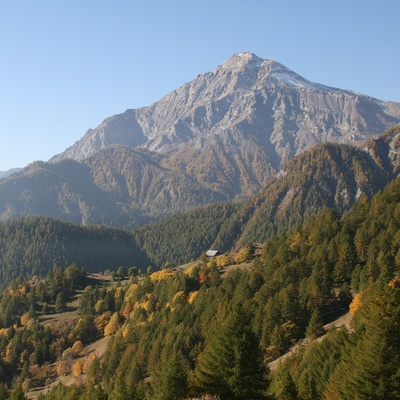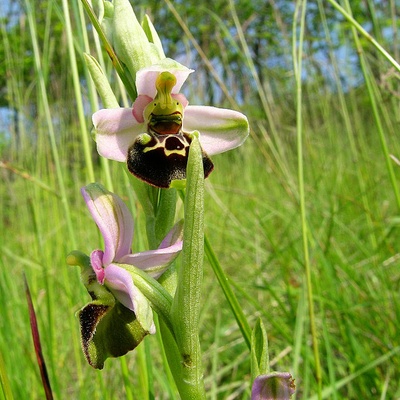
Oasi xerotermica Oulx-Amazas, 10056 Oulx
Adjacent to the Lake Borello Site of Community Interest, the xerothermic oasis Oulx-Amazas is located, occupying part of the eastern slope of Mount Cotolivier (2,106 m), from the valley floor up to about 1,500 m in elevation and part of the riverbed of the Dora Riparia that runs along its slopes.
In total, more than 300 hectares where you can find pine forests on the riverbed of the Dora, with willow groves of Salix purpurea and Salix eleagnos, hay meadows, and dry meadows on a calcareous substrate, with stunning orchid blooms.
It is precisely in this latter habitat that you can observe the typical orchids of Mediterranean environments, the Ophrys, which make this corner of the valley unique. Some of these orchids, like O. fuciflora, have developed a particular reproductive strategy: one of the petals, the labellum, visually, olfactorily, and even in terms of hairiness, mimics the back of a female bumblebee. In this way, they are pollinated by young male insects.
Aceras anthropophorum also blooms here, which, observed closely, shows its man-shaped flowers, hence the name. Among the colorful butterflies, Parnassius apollo and Hyles hippophaes are protected species at the European level, but Polyommatus exuberans is an endemic lycaenid of the Susa Valley, meaning it is found only here.
Among the reptiles that find these environments milder temperatures compared to the rest of the valley, it is not difficult to encounter the smooth snake, an absolutely harmless snake, but often confused with the viper because, if startled, as a defensive strategy, it does everything to resemble it.
The slopes of Cotolivier are also known by birdwatching enthusiasts for the migration of birds of prey, including the honey buzzard which, as suggested by its scientific name, Pernis apivorus, feeds on insects, primarily wasps. The wolf, a priority species in terms of protection, is also present on this site.












